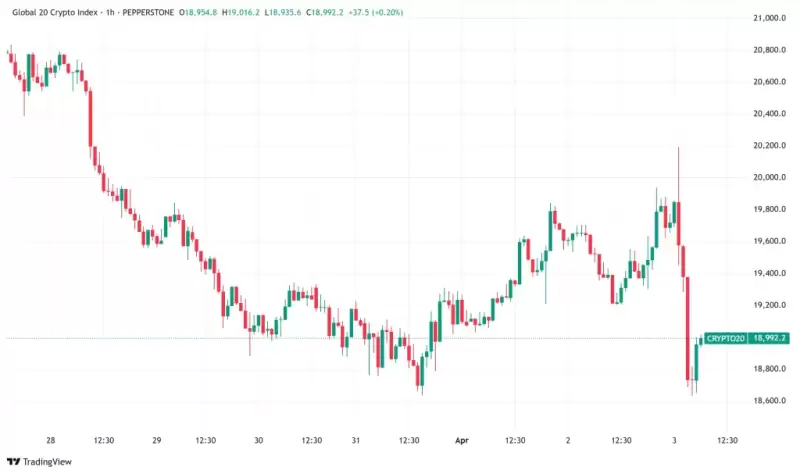 |
|
 |
|
 |
|
 |
|
 |
|
 |
|
 |
|
 |
|
 |
|
 |
|
 |
|
 |
|
 |
|
 |
|
 |
|
Cryptocurrency News Articles
How to Mine Dogecoin (DOGE) - A Step-by-Step Guide for Beginners
Nov 04, 2024 at 12:00 am
Dogecoin mining is a process where computers solve complex mathematical problems to verify and add new transactions to the Dogecoin blockchain. When miners successfully solve these puzzles, they receive newly created DOGE tokens as rewards.

Dogecoin mining is a process where computers solve complex mathematical problems to verify and add new transactions to the Dogecoin blockchain. When miners successfully solve these puzzles, they receive newly created DOGE tokens as rewards. This system, known as Proof of Work, maintains the network's security and processes transactions without intermediaries like banks.
Miners essentially act as auditors and transaction processors for the Dogecoin network. They bundle pending transactions into blocks, verify their authenticity and compete to find a specific number (nonce) that will make the block valid. The first miner to find this solution broadcasts the block to the network, adds it to the blockchain and collects the block reward plus transaction fees. Currently, miners receive 10,000 DOGE per block, with new blocks generated approximately every minute.
The mining process requires specialized computer hardware called Application-Specific Integrated Circuits or Graphics Processing Units, along with mining software and a stable internet connection. While dogecoin originally allowed CPU mining on regular computers, the network's growing difficulty now makes dedicated mining equipment necessary for profitable operations.
How Does Dogecoin Mining Work?
Dogecoin mining uses the Scrypt algorithm, which differs from Bitcoin's SHA-256. The process starts when a miner's computer receives pending transactions from the network and combines them into a block. The miner's hardware then repeatedly attempts different nonce values, aiming to create a block hash that meets the network's current difficulty target.
The Scrypt algorithm makes intensive use of computer memory, which affects hardware choices and energy consumption. When a miner finds a valid solution, they broadcast the new block to other network participants for verification. If the block passes validation, it joins the blockchain, and the miner receives 10,000 DOGE plus transaction fees. The network automatically adjusts mining difficulty every 240 blocks to maintain a consistent one-minute block time.
Miners can work solo or join mining pools to share resources and rewards. In pools, participants combine their computing power to find blocks faster, splitting rewards based on their contributed hashpower. The pool operator manages work distribution and reward payments, taking a small fee for these services. This cooperative approach provides more steady income compared to solo mining's all-or-nothing results.
The main difference between dogecoin and bitcoin mining lies in their algorithms. Dogecoin uses Scrypt, which needs more memory but less processing power than Bitcoin's SHA-256. This algorithmic difference means Bitcoin ASICs can't mine dogecoin, creating separate hardware markets and mining communities. Scrypt's memory requirements also make dogecoin mining more accessible to GPU miners.
Block times and rewards separate these cryptocurrencies further. Dogecoin creates new blocks every minute with a fixed reward of 10,000 DOGE, while Bitcoin produces blocks every 10 minutes with rewards that halve every four years. Bitcoin's limited supply of 21 million coins contrasts with dogecoin's unlimited supply. These economics affect long-term mining profitability and network security dynamics.
Mining difficulty adjustments follow different patterns too. Dogecoin recalculates difficulty every 240 blocks (about 4 hours) to maintain consistent block times. Bitcoin adjusts every 2,016 blocks (roughly two weeks). The shorter adjustment period helps Dogecoin respond faster to hashrate changes, but can also lead to more volatile mining profitability.
The process involves five key steps: setting up a wallet, selecting hardware, choosing a mining strategy, installing software and collecting rewards. Each step needs careful consideration to build an efficient and profitable mining operation.
1. Set Up A Crypto Wallet
Before mining, you need a secure wallet to store your dogecoin rewards. Hot wallets like Trust Wallet or the official Dogecoin Core wallet connect to the internet for easy access and quick transactions. They work well for active trading but face online security risks.
Cold wallets like Ledger or Trezor store your private keys offline, offering maximum security for long-term holdings. These hardware devices protect your DOGE from online threats but make frequent transactions less convenient.
2. Choose Your Mining Hardware
Modern dogecoin mining demands powerful ASIC miners or GPU setups. Top ASIC options include the Bitmain Antminer L7 (9.16 Gh/s) and Goldshell Mini DOGE (185 Mh/s). For GPU mining, cards like the NVIDIA RTX 3080 or AMD RX 6800 XT deliver strong performance. Your setup needs proper cooling (fans, air conditioning), stable internet and a reliable power supply with surge protection.
3. Choose Your Mining Strategy
Your mining strategy affects profitability, risk and technical requirements. Each approach offers distinct advantages based on your goals and resources.
4. Set Up Your Mining Software
Popular mining software options include CGMiner, EasyMiner and MultiMiner. These programs connect your hardware to the Dogecoin network and mining pools. CGMiner leads in flexibility and features while EasyMiner offers a simpler interface for beginners. The software needs proper configuration of pool
Disclaimer:info@kdj.com
The information provided is not trading advice. kdj.com does not assume any responsibility for any investments made based on the information provided in this article. Cryptocurrencies are highly volatile and it is highly recommended that you invest with caution after thorough research!
If you believe that the content used on this website infringes your copyright, please contact us immediately (info@kdj.com) and we will delete it promptly.
-

-

-

-

-

-

-

-

- Daily Crypto Signals: Bitcoin Tumbles from $88.5K, XRP Awaits Ripple Effects of New Trump Tariffs
- Apr 03, 2025 at 10:30 am
- The cryptocurrency market displayed a mixed landscape on April 2nd, 2025, as Bitcoin, Ethereum, XRP, and other altcoins grappled with the ripple effects of newly announced US tariffs
-




























































